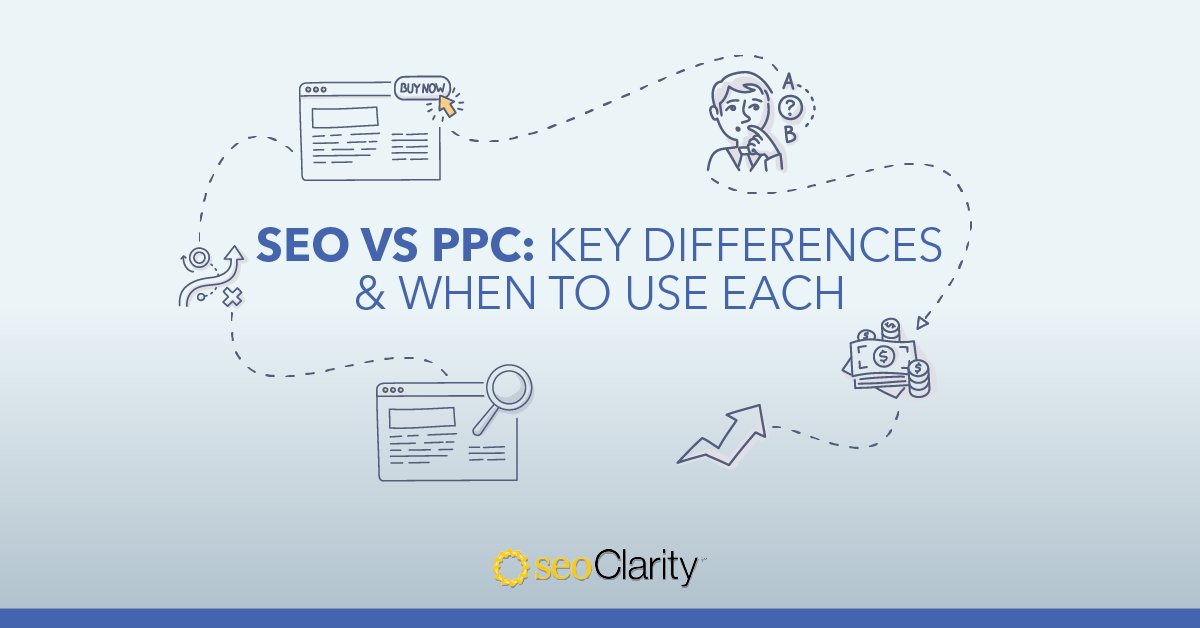Internal linking is one of the most powerful but often neglected aspects of SEO. Many SEOs understand its importance, yet moving from strategy to reality can be difficult, especially for enterprise teams dealing with constantly evolving websites, under-resourced teams, and complex site structures.
If you’ve struggled to prioritize internal linking, you’re not alone—our recent survey shows that only 12% of SEOs are actively doing so. But with the right strategies and tools, internal linking can drive significant growth, including the potential for +20% traffic increases*.
In this webinar, Chris Sachs, Vice President of Client Success, Suraj Lalchandani, Senior IT Project Manager, and Jeff Reynolds, Senior Product Manager at seoClarity, shared actionable steps to transform internal linking from a challenge into a scalable, high-impact SEO strategy.
*Results are based on seoClarity clients that have implemented successful internal link strategies. Results may not be typical and depend on your site's content and technical implementation.
Webinar Overview
Table of Contents:
- Importance of Internal Linking
- Challenges of Internal Linking
- Why Internal Linking is Hard to Prioritize
- Use Cases and Challenges from SEOs
- Best Practices for Internal Linking
- Getting Started with Internal Linking
- Quick Wins and Low-Hanging Fruit
- Scaling Internal Linking with Link Optimizer
1. Importance of Internal Linking
- Internal linking directly impacts page authority and relevance.
- Google uses links and anchor text to understand content hierarchy.Internal linking enhances user experience by guiding users through relevant content.
- It can drive over 20% more traffic by building link equity and distributing authority from high-traffic pages.
- Despite its benefits, many SEOs struggle with internal linking, especially at enterprise scale.
2. The Challenges of Internal Linking
- SEOs value internal linking but find it hard to prioritize due to manual effort.Only 12% of enterprise SEOs currently prioritize internal linking.
- Key challenges include:
- Time constraints: Manually linking large sites takes too long.
- Under-resourced teams: SEO teams juggle multiple priorities.
- Dynamic sites: Constantly evolving content makes updating links challenging.
- Scaling: Implementing and maintaining links often requires dev team support.
- Maintaining links: As sites grow, internal links need regular updates.
3. Why Internal Linking is Hard to Prioritize
- Internal linking is time-consuming and hard to scale across thousands of pages.
- Enterprise sites evolve quickly, making it difficult to maintain internal links.
- Efforts often require collaboration with dev teams, adding complexity.
- SEOs feel overwhelmed by the constant need to manage links at scale.Despite the challenges, internal linking is one of the few SEO elements SEOs can fully control.
4. Real SEO Challenges with Internal Linking
"Sites are like living organisms—constantly changing, with new pages being added and old ones being removed." -- Chris Sachs
- The most common issues we hear from enterprise clients:
- Identifying the right pages to link to.
- Deploying and maintaining links at scale.
- Optimizing anchor text to ensure relevance.
- Measuring the impact of internal linking strategies and confirming that they’re effective.
- As enterprise sites grow, maintaining site structure and proper internal linking becomes harder, leading to missed opportunities.
"SEO teams have limited time and resources, making it hard to focus on internal linking when other SEO tactics demand immediate attention." -- Suraj Lalchandani
5. Best Practices for Internal Linking:
-
Use Relevant Anchor Text: Align with search intent and describe the linked page clearly.
-
Avoid Excessive Links: Too many links dilute page rank.
-
Avoid Duplicate Links: Google only credits the first instance of a link.
6. Getting Started with Internal Linking
- Start with a site crawl to understand your current internal linking structure.
- Focus on your most important pages—those driving impressions and clicks.
- Connect semantically related pages to strengthen topical relevance.
- Optimize link paths: Ensure important pages are easy to find and effectively linked.
7. Quick Wins and Low-Hanging Fruit
-
Target pages ranking in positions 5-10 and add internal links to boost them.
-
Link orphan pages: Make sure every page is connected to at least one other page.
-
Optimize anchor text: Avoid generic phrases like "click here" and use descriptive, relevant terms.
8. Scaling Internal Linking with Link Optimizer
- seoClarity’s ClarityAutomate streamlines the process by analyzing and auditing your internal links.
- With Link Optimizer, SEOs can define, update, and deploy internal links at scale.
- The platform generates insights, helps implement strategies quickly, and fosters continuous improvement.
Take Action on Your Internal Link Strategy
Link Optimizer keeps SEOs fully in control, allowing them to review and approve all link destinations and anchor text. Ready to scale your internal linking strategy with automation? Sign up for a demo of ClarityAutomate™ Link Optimizer today



.png?width=140&name=Untitled%20design%20(10).png)



Comments
Currently, there are no comments. Be the first to post one!